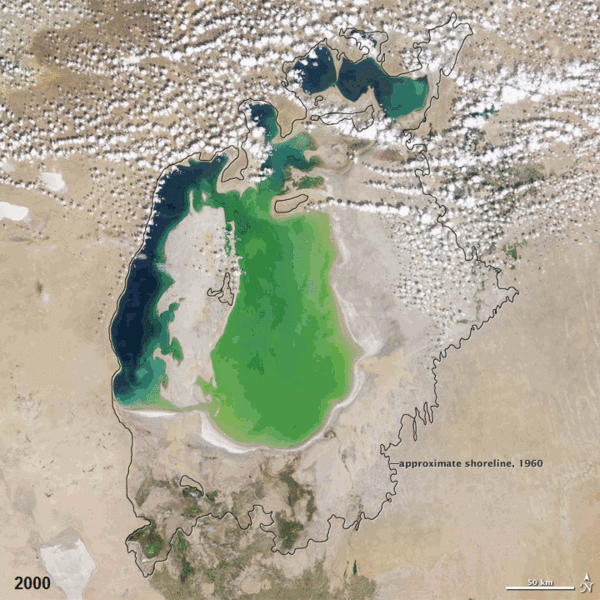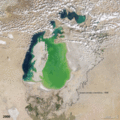Файл:Aral sea.gif

Ҡарап сығыу ваҡытындағы күләм: 600 × 600 пиксель. Башҡа айырыусанлыҡтар: 240 × 240 пиксель | 480 × 480 пиксель | 720 × 720 пиксель.
Сығанаҡ файл ((720 × 720 пиксель, файл күләме: 3,16 Мб, MIME-төр: image/gif), цикллы, 12 кадр, 12 с)
Файл тарихы
Файлдың күрһәтелгән ваҡытта ниндәй өлгөлә булғанын ҡарар өсөн баҫығыҙ: Дата/ваҡыт
| Дата/ваҡыт | Миниатюра | Үлсәмдәре | Ҡатнашыусы | Иҫкәрмә | |
|---|---|---|---|---|---|
| ағымдағы | 07:38, 19 декабрь 2011 |  | 720 × 720 (3,16 Мб) | ComputerHotline | == Summary == {{Information |Description={{en|In the 1960s, the Soviet Union undertook a major water diversion project on the arid plains of Kazakhstan, Uzbekistan, and Turkmenistan. The region’s two major rivers, fed from snowmelt and precipitation in |
| 12:19, 25 декабрь 2010 |  | 720 × 720 (2,92 Мб) | ComputerHotline | == Summary == {{Information |Description={{en|In the 1960s, the Soviet Union undertook a major water diversion project on the arid plains of Kazakhstan, Uzbekistan, and Turkmenistan. The region’s two major rivers, fed from snowmelt and precipitation in |
Файл ҡулланыу
Был файлды киләһе бит ҡуллана:
Файлды глобаль ҡулланыу
Был файл түбәндәге википроекттарҙа ҡулланыла:
- ca.wikipedia.org проектында ҡулланыу
- en.wikibooks.org проектында ҡулланыу
- es.wikipedia.org проектында ҡулланыу
- et.wikipedia.org проектында ҡулланыу
- eu.wikipedia.org проектында ҡулланыу
- fr.wikipedia.org проектында ҡулланыу
- hsb.wikipedia.org проектында ҡулланыу
- kk.wikipedia.org проектында ҡулланыу
- pl.wikipedia.org проектында ҡулланыу
- ro.wikipedia.org проектында ҡулланыу
- ru.wikipedia.org проектында ҡулланыу
- ru.wikibooks.org проектында ҡулланыу
- ru.wikinews.org проектында ҡулланыу
- simple.wikipedia.org проектында ҡулланыу
- sk.wikipedia.org проектында ҡулланыу
- uz.wikipedia.org проектында ҡулланыу


